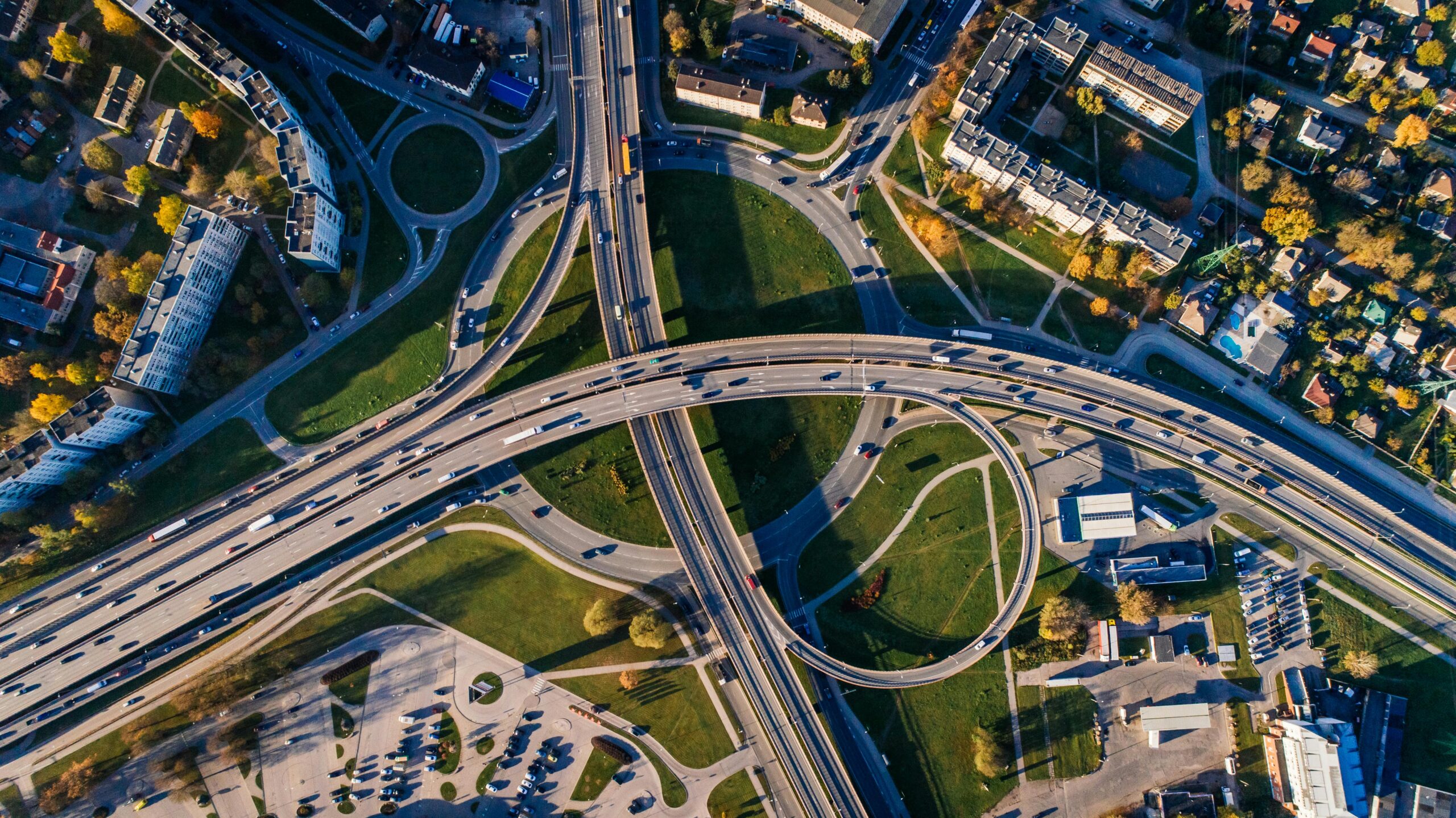With urban populations on the rise, cities across the globe are increasingly leveraging technology to address growing transportation and infrastructure challenges. Smart cities, urban environments that use data, connectivity, and automation, are redefining how people move through daily life.
According to Grand View Research, the worldwide smart cities market was worth $ 877.6 billion in 2024. It is expected to increase to $ 3,757.9 billion by 2030, growing at a remarkable CAGR of 29.4% between 2025 and 2030.
This explosive growth is largely driven by rapid urbanization, which is compelling governments to adopt more sustainable and efficient city planning strategies. From AI-powered traffic management and electric vehicle infrastructure, smart cities are enhancing mobility while reducing environmental impact.
In this article, we will discuss the innovative ways these technologies are transforming how we navigate urban spaces every day.
The Rise of Intelligent Traffic Systems
Smart cities are harnessing the power of AI-driven traffic management systems to streamline urban mobility and reduce congestion. These advanced systems gather real-time data from traffic cameras, road sensors, GPS devices, and mobile apps to monitor traffic conditions and optimize flow.
Machine learning algorithms process this data to forecast congestion, pinpoint traffic bottlenecks, and dynamically adjust signal timings for smoother travel.
Edge AI is playing a critical role in these advancements. For example, Pittsburgh’s SURTRAC system enables intersections to negotiate signal timings autonomously, reducing travel time by 25% and idling by 40%. Its decentralized design allows edge devices to make fast, local decisions without human intervention.
In Los Angeles, over 4,500 intersections now use AI-driven adaptive signal systems, resulting in a 12% decrease in peak-hour delays. These innovations also reduce emissions and enhance emergency response times, making city travel safer and greener.
Autonomous and Connected Vehicle Integration
Autonomous and connected vehicles are driving the evolution of smart cities by enabling safer and more efficient transportation. These vehicles, outfitted with AI, sensors, and cameras, interact seamlessly with city infrastructure (V2I) and other vehicles (V2V) to make intelligent navigation decisions. This networked approach enhances road safety, reduces collisions, and optimizes traffic movement.
Connected vehicles also receive real-time updates on traffic, road conditions, and hazards, enabling optimized routing and adaptive speed control. As adoption grows, cities may redesign roads to better support autonomous driving, reducing reliance on traffic lights and traditional signage.
According to McKinsey, advanced driving (AD) systems could generate $ 300–$ 400 billion in the passenger car market by 2035. Vehicles with lidar-based Level 2+ features already carry component costs of $ 1,500–$ 2,000 or more, showing the economic scale of this shift.
Autonomous fleets also promise accessible transport for elderly and disabled populations, while reducing the need for private vehicle ownership.
Smart Public Transportation Networks
Smart cities are transforming public transportation with intelligent systems that improve efficiency, reliability, and user convenience. Today’s bus and rail networks use GPS tracking, predictive analytics, and mobile apps to deliver real-time updates on arrivals, delays, and service disruptions.
These tools allow passengers to plan trips more effectively, often integrating different transit modes into a single, seamless journey planner.
According to the World Economic Forum, San Francisco leads globally in smart mobility, thanks to its tech-driven solutions and focus on public transit improvements. Cities like Singapore and Helsinki also stand out for integrating AI, prioritizing green energy, and preparing for autonomous transit options like air taxis.
Dynamic pricing models encourage off-peak travel by adjusting fares based on demand, easing congestion, and improving ride quality. Additionally, smart payment systems, ranging from contactless cards to mobile and biometric options, make fare transactions safer and more efficient for commuters.
Safety Implications in Smart Mobility
As smart cities integrate technologies like autonomous vehicles, connected infrastructure, and AI-driven systems, new safety and legal challenges are emerging. When accidents occur in these complex ecosystems, determining liability is no longer straightforward.
The fault could lie with a vehicle manufacturer, software developer, infrastructure provider, or even a human operator. This complexity increases the importance of having legal professionals who understand the evolving landscape.
A car accident lawyer with expertise in smart mobility can play a vital role in investigating such incidents. They collaborate with technical experts to analyze vehicle systems and data, while also navigating complicated insurance and regulatory frameworks.
According to TorHoerman Law, injuries can impact every aspect of life, from physical health to financial stability. A skilled lawyer advocates for victims’ rights and helps secure rightful compensation. As smart mobility expands, legal guidance will be essential in ensuring safety, accountability, and justice within these rapidly evolving systems.
Sustainable and Multimodal Transportation Solutions
Smart cities are championing sustainability by building multimodal transportation that lessens private vehicle dependency. This involves integrating electric vehicle charging networks, bike-sharing, scooter rentals, and pedestrian-friendly infrastructure into cohesive mobility ecosystems. Data analytics optimize service placement, enhancing convenience and usage.
Intelligent routing considers environmental factors, suggesting eco-friendly transport modes and routes. For instance, a smart app might recommend an electric bus combined with an e-scooter, providing real-time availability and cost.
According to Cities of the Future, Helsinki and Oslo are global leaders in sustainable mobility, emphasizing air quality, cycling infrastructure, and EV adoption. Helsinki targets carbon neutrality by 2030 with expanded walkways and cycling routes, while Oslo leads in EV adoption thanks to robust government incentives.
Renewable energy sources further power these solutions, minimizing urban transportation’s environmental footprint.
Frequently Asked Questions
How might living in a smart city change your daily life?
Living in a smart city can streamline daily life through efficient public transport, reduced traffic congestion, and real-time updates via mobile apps. Enhanced safety and cleaner air improve the quality of life. Smart utilities and easier access to services like parking or healthcare make everyday tasks more convenient and connected.
How are smart cities shaping the future of urban living?
Smart cities are reshaping urban living by integrating technology to enhance efficiency, sustainability, and quality of life. From intelligent traffic systems to renewable energy infrastructure, they reduce congestion, improve public services, and promote environmental responsibility. These innovations create more livable, connected, and resilient communities for current and future generations.
What are the key pillars of a smart city?
The key pillars of a smart city include smart mobility, sustainable infrastructure, digital governance, efficient energy management, and data-driven public services. These components work together to enhance urban living by improving transportation, reducing environmental impact, and promoting citizen engagement. They also help optimize resource use through technology and real-time data integration.
The evolution of everyday mobility in smart cities marks one of the most impactful shifts in modern urban development. As technology progresses, we can anticipate increasingly innovative solutions that will redefine how people navigate urban spaces.
However, the effectiveness of smart mobility goes beyond technological breakthroughs. Success relies on strategic planning, sound regulatory frameworks, and, just as crucially, active community participation.

